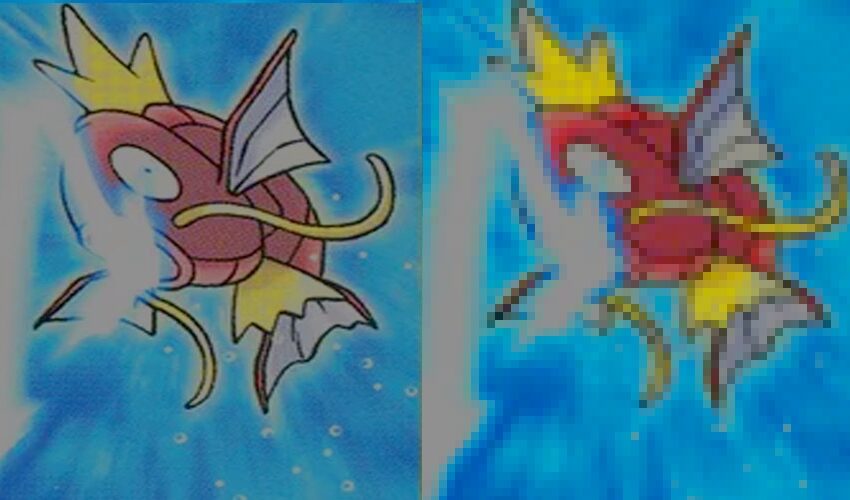In March of 2021, Christie’s, a luxury auction house, partnered with digital artist, Beeple, to be the very first major auction house to list a completely digital, unique Non-Fungible Token (NFT). The auction for the digital artwork amassed a staggering $69.3 Million USD, and sparked worldwide interest in NFT artworks, with the total value of sales for NFT artworks reaching $2.57 Billion USD in 2021 alone, compared to $20 Million USD in 2020.
Now, the total value of sales for NFT artworks has struggled to reach even a fraction of its previous value, with the aggregated sales value in June of 2022 reaching a mere $33 Million USD.
What’s Next for NFTs?
Although NFT artwork sales have significantly decreased, this does not mark the end of NFTs’ value to consumers. The value of NFTs lies beyond that of digital artwork and collectibles. There are many more varieties of NFTs, let’s look at five other NFT categories that have the potential to remain successful.
Smart Contract NFTs
All NFTs are registered on the blockchain, a decentralized, distributed public ledger that records all digital transactions. This provides the advantage of easy and public verification of the authenticity and ownership of any NFT, as well as a documentation of the journey and current owner of the NFT as it is sold and purchased.
Companies and brands are already taking advantage of this feature, as many are starting to utilize the blockchain to create their own solutions for tracking and verifying their products. One such solution is the Aura Blockchain Consortium. Founded by prominent luxury brands LVMH, Prada, and Richemont, the Aura Blockchain Consortium provides a unique certificate of authenticity for luxury products and allows for supply chain transparency to be integrated into the NFT metadata. Consumers are now able to track a product’s lifecycle from raw materials to purchase and transfer of ownership.
The ever popular clothing and shoe trading marketplace and reseller, StockX, is also trying their hand at smart contract NFTs with their newly released Vault NFTs. Each Vault NFT is tied to a physical product that is summarily stored in StockX’s climate-controlled, high-security storage vault, where consumers and resellers can purchase, trade, and sell the NFT associated with the physical product. This provides consumers and resellers the luxury of never having to physically store the item themselves, as well as saving the costs of shipping and authentication after every purchase and trade. Of course, if one desires to obtain the physical product, they simply have to redeem their NFT upon which the associated physical product will be shipped and delivered to the owner of the NFT.
Gamified NFTs
With the metaverse increasing in popularity, there is a rising number of blockchain-based platforms coming into play. Whether in the form of a play-to-earn or play-and-earn gaming model, many new metaverse platforms such as Decentraland and Otherside are utilizing some form of NFT-driven in-game assets such as weapons, skins, digital accessories, and virtual land, where players can purchase or earn these NFTs, and trade them for real-world value.
Some brands have already dabbled in creating their own platforms that support gamified NFTs such as Louis Vuitton’s “Louis the Game” and Burberry’s “Blankos Block Party.” Both games allow for players to explore and collect unique NFTs in an open-world environment, with Burberry’s “Blankos Block Party” even allowing players to fully own the digital items they collect in the form of NFTs that can be bought and sold for real money. “Blankos Block Party” released 2250 NFTs worth $375K USD, which sold out in 30 seconds, indicating the immense popularity and potential for gamified NFTs.
NFTs also realize the potential for other forms of gaming models, as is the case of OSBiome’s ‘health-to-earn’ model of gamified NFTs. Holders of OSBiome’s Ome NFT are given real-life personalized ‘health quests’ such as tracking sleep cycles and eating healthier foods, where completing these quests allows players to earn redeemable tokens, hence ‘health-to-earn.’
The intersection of new gaming models and gamified NFTs paves the way for the next generation of games, only made possible by the immense potential of the blockchain and NFTs.
Branded NFTs
Branded NFTs are slowly rising in popularity and will maintain their niche in the market due to the fact that they provide holders access to exclusive communities and brand loyalty perks.
Brands such as YSL Beauté and Dolce&Gabbana have already entered this field of NFT, both creating brand exclusive NFTs such as YSL’s Beauty Golden Blocks NFTs and their corresponding NFT Wallet, YSL Beauty Wallet, as well as Dolce&Gabanna’s DGFamily Box NFTs. Holders of a branded NFT are granted access to the brand’s exclusive communities, in the case of YSL’s newly created Web3 Ecosystem and Dolce&Gabbana’s NFT community.
More companies and brands will undoubtedly enter the branded NFT space, in an effort to increase brand loyalty and exposure by providing perks and exclusive offerings to those that hold a branded NFT.
Trading Card NFTs
Whether digital or physical, non-fungible trading cards have always maintained their relevance in the market. Physical trading cards are generally scored by the Professional Sports Authenticator (PSA) on a scale of 1 to 10, with 10 indicating a virtually perfect card. The most expensive PSA 10 graded Pokémon card costs up to $6 Million USD, making these cards highly sought after and ultra-rare. With the innate non-fungibility and collectibility of physical trading cards, trading card NFTs appear to be a perfect fit for this industry.
The most notable NFT trading card-style is that of the officially licensed NBA Top Shot. Replicating the randomness and lottery-style of real-life trading card packs, consumers can purchase digital packs which include varying levels of rarity for NBA moments, digital plays, and NBA/WNBA players themselves. Consumers can trade, purchase, and sell individual NFTs with the value of the NFT determined by its rarity – just like physical trading cards.
Self-Contained NFTs
Although artwork NFTs are slowing phasing out of being seen as relevant, luxury art, self-contained NFT collections are still resistant to a complete downward spiral due to their loyal communities and notoriety.
Perhaps the most famous NFT collection that still retains much of its previous value and popularity is that of Yuga Lab’s Bored Ape Yacht Club (BAYC). Launched in April 2021, the Bored Ape Yacht Club debuted as a limited collection of 10,000 unique NFTs built on the Ethereum blockchain. The design of each Bored Ape is procedurally generated, in other words, they follow a mathematical algorithm that randomly distributes 170 possible traits into seven different properties: background, clothes, earrings, eyes, fur, hats, and mouths. Some traits are rarer than others, contributing to the overall value of the Ape.
With the average sale price of a single Bored Ape being $115K USD as of July 2022, ownership of the highly sought after NFT provides the owner access to one of the most exclusive communities in the NFT market. Many prominent figures including professional athletes and musical artists such as Tom Brady and Madonna own a Bored Ape NFT, and all owners of the token are given access to exclusive events with the most recent event being ApeFest, a private three-day concert in New York City’s Pier 17 in June of 2022.
Another similar self-contained NFT collection is Larva Lab’s CryptoPunks NFTs. Similarly to the Bored Ape Yacht Club, each of the 10,000 unique CryptoPunks NFTs are procedurally generated and built on the Ethereum blockchain. With the average sale price of a single CryptoPunk being $169K USD, CryptoPunks retains its value as a status symbol and exclusive community for owners of the NFT.
As of March 2022, Yuga Labs has acquired CryptoPunks, and is currently in development of the Otherside metaverse, a gamified, interoperable massive multiplayer online role playing game (MMORPG) where players can convert their NFTs into playable 3D models in game, with Bored Ape Yacht Club (BAYC), CryptoPunks, Mutant Ape Yacht Club (MAYC), and Bored Ape Kennel Club (BAKC) NFT holders being provided Otherside-ready 3D models of their NFTs right at game launch.
What to watch for?
The current reputation of NFTs as luxury artworks is slowly losing its place in the market, and many wonder if NFTs themselves are no more than a mere fad. We know, however, that artwork NFTs are just a single flavor of the NFT cornucopia. NFTs will continue to impact our physical and digital lives immensely, especially in the near future.

